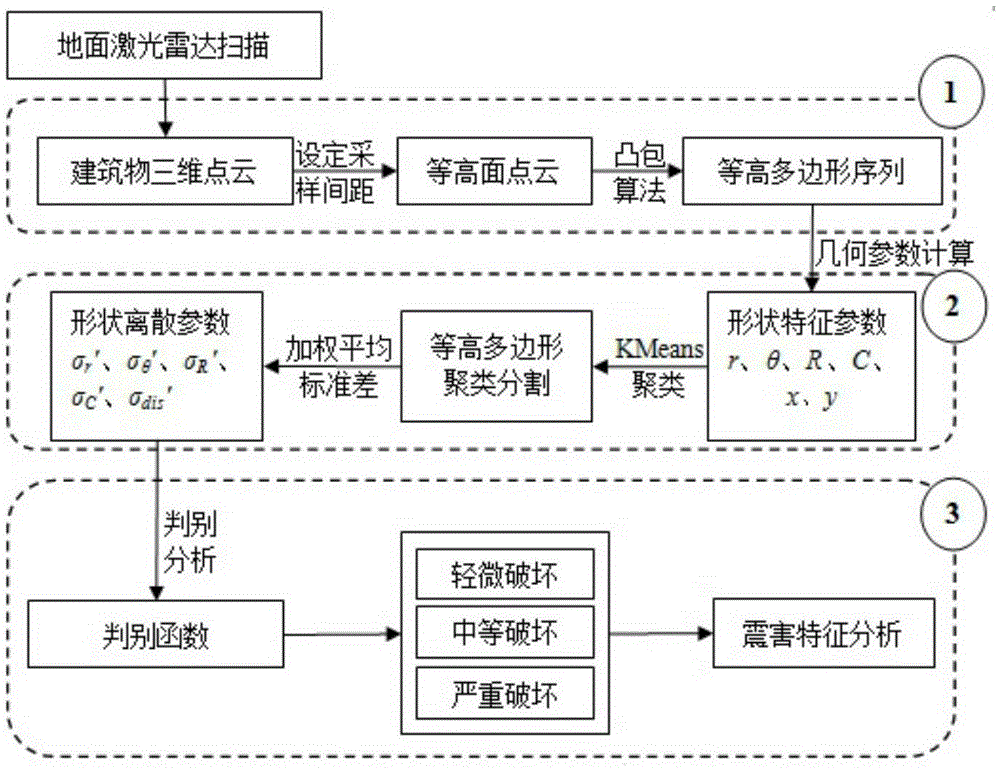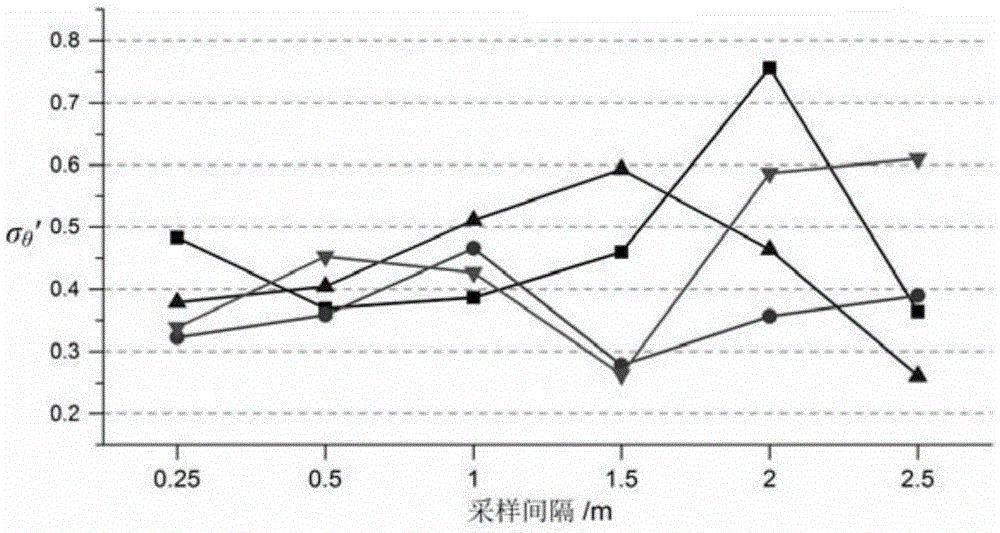Building seismic damage analysis method
An analysis method and building technology, applied to building components, earthquake resistance, instruments, etc., can solve the problems that the damage state cannot be truly reflected, the remote sensing earthquake damage classification and grading standards are not consistent with the on-site investigation, and the difficulty of using it
- Summary
- Abstract
- Description
- Claims
- Application Information
AI Technical Summary
Problems solved by technology
Method used
Image
Examples
Embodiment
[0184] In this method, experiments were carried out on the 3D laser point cloud data acquired after the Wenchuan Earthquake. A total of 21 buildings were selected as sample data, including 12 buildings in Beichuan County, 6 buildings in Hanwang Town, 1 building in Dujiangyan City, and 1 building in Beijing. The 3D point cloud data of the above-mentioned buildings were collected and processed by a 3D laser scanner, and the degree of damage and the number of blocks were recorded during the on-site investigation. Table 1 is the basic information of the collected building samples, which will be used for subsequent analysis Provide auxiliary information. In order to analyze the influence of different sampling intervals of buildings on the shape characteristic parameters and seismic damage analysis results, six groups of different sampling intervals i were set in the experiment, which were 0.25m, 0.5m, 1m, 1.5m, 2m and 2.5m.
[0185] 1. Results and analysis; for 21 buildings, the sh...
PUM
 Login to View More
Login to View More Abstract
Description
Claims
Application Information
 Login to View More
Login to View More - R&D
- Intellectual Property
- Life Sciences
- Materials
- Tech Scout
- Unparalleled Data Quality
- Higher Quality Content
- 60% Fewer Hallucinations
Browse by: Latest US Patents, China's latest patents, Technical Efficacy Thesaurus, Application Domain, Technology Topic, Popular Technical Reports.
© 2025 PatSnap. All rights reserved.Legal|Privacy policy|Modern Slavery Act Transparency Statement|Sitemap|About US| Contact US: help@patsnap.com



